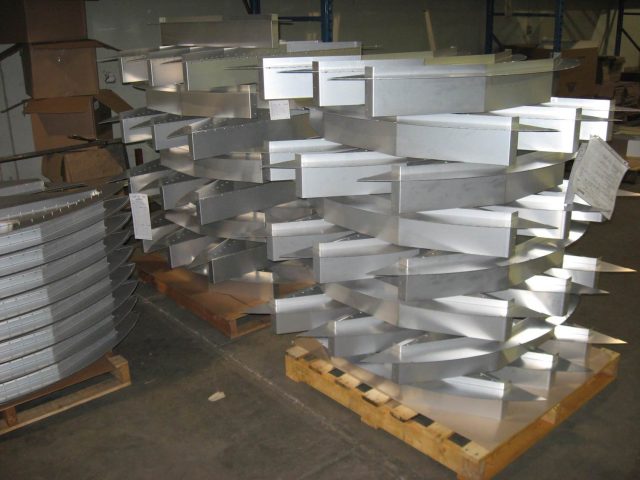Welding and fabrication shops use various metals and their alloys in the fabrication of products that range from automobiles to refrigerators. To successfully complete a fabrication project, fabricators rely on certain metals and their alloys over others. When heated, metals may soften and expand, but not every metal or metal alloy responds to heat in a way that it can be manipulated to successfully fulfill a given fabrication project. Because metals respond to heat differently, welding and fabrication shops use specific metals with specific alloys and mechanical properties to meet the application requirements of the fabrication project. In doing so, it ensures its success.
As a common fabrication process, welding utilizes a combination of heat and pressure to join two metal workpieces together. Welding can be accomplished by machine, robotics, and by hand. There are nearly 30 kinds of welding processes that use elements such as gas, electricity, and lasers to join metals. Of the many processes, the three principal welding procedures are Stick or Arc Welding, MIG Welding, and TIG Welding. Just as important that the correct welding method is used to join workpieces is that the metals selected are well-suited for the metal fabrication shop project.
Metals Used By Welding and Fabrication Shops
In fabrication, welding processes are instrumental in making parts and components for many industries. Durable goods, medical devices, oil, gas, and chemical processing equipment, aerospace, automobile, rail and other areas of transportation, building and architecture, bridges, storage spaces and metal cabinetry, and much more are all fabricated in part through welding processes. These varying industries rely on an assortment of metals and their alloys to fabricate their products. The more commonly used for welding applications are stainless steel, carbon steel, and aluminum. Here’s why:
Stainless Steel
Fabricators look to stainless steel as a choice material for its many favorable properties. Above all, it’s well regarded for its corrosion resistance, aesthetic appeal, and its hygienic applications, but it also offers strength, durability, heat resistance with low maintenance. Depending on the grade and type of stainless steel, and as long as the heat is regulated, stainless steel can be a very weldable alloy. Of the four main types of stainless steel—ferritic, austenitic, martensitic, and duplex—ferritic and austenitic stainless steels are better suited for welding. Other stainless steels such as martensitic are prone to cracking when welded. Architectural features, food and medical grade durable goods, devices, and components, are just some of the stainless steel fabricated products resulting from welding processes.
Carbon Steel
Carbon steel is often thought of as a singular metal alloy of iron. However, due to varying ratios of carbon, when combined with other elements, carbon steel’s crystalline structure can be altered to provide the desired properties for an application. Because the ratios of carbon can be altered, carbon steel is commonly divided into three classifications, aptly named: low carbon steel, medium carbon steel, and high carbon steel. It is low carbon steel, sometimes referred to as mild steel, that is used in welding. That small percentage of carbon—from 0.04% to no more than 0.3%—when combined with approximately 0.4% manganese makes low carbon steel highly ductile, a mechanical property that also makes it highly weldable. The high ductility of the material reduces the chances of brittleness in the heat-affected zones of the structure which would otherwise increase the risk of hydrogen cracking. Unlike medium carbon steel and high carbon steel, low carbon steel is easy to weld, cut, and shape, making it an ideal choice for tasks requiring strength and shaping. Among its many applications, low carbon steel is used in automobile body components, construction and structural shapes (I-beams, channel and angle iron), and industrial pipes.
Aluminum
Aluminum is another popular metal used for welding fabricated products. Though it’s lighter than carbon steel and stainless steel, it holds several properties that make it suitable for fabrication. It is strong and durable, lightweight, easily malleable, highly conductive but not magnetic. It is, like stainless steel, corrosion-resistant and non-toxic. In general, aluminum is used in many industrial, commercial, and consumer products and applications. Its excellent weight-to-strength ratio and corrosion resistance make it ideal in the fabrication of parts for the aerospace and automotive industries. In construction, it is used for architectural decoration due to its finish and as a structural material for its energy efficiency and sustainability. HVAC systems are typically made of aluminum as are durable goods such as refrigerators, washing machines, dryers, dishwashers, and so on.



